Part of a series of articles titled African American Households.
Article
Finding Identity Through Material Culture: The Robinson's Tableware and Glassware
Conducting an analysis on the collection of glass and ceramics from the Robinson family provides the opportunity to study what types of goods the family used during the late nineteenth and early twentieth centuries. They had a wide variety of decorative ceramics, as well as individual matched sets for the dining table and for serving tea. The tablewares, as well as the decorative ceramic items the family had in their home, indicates their knowledge of popular dining and decorative items used during these time periods.
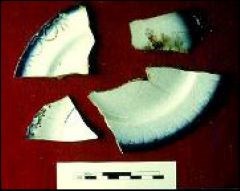
NPS
These sets of American shell-edged wares are probably from East Liverpool, Ohio Potteries and date to the 1920s and 1930s. A number of different American shell-edged patterns were identified in this collection. This suggest the Robinson's may have followed dominant Victorian material dining standards in which consumers assembled sets of matching or similar wares. The Robinson's desire to assemble matching wares may be indicative of their social aspirations. As some researchers suggest that the rights of citizenship were symbolically associated with position in society, this may have been a method the Robinson's used to negotiate their position in society and their community.
Glass items indicate the family used mass-produced goods, particularly the large quantities of brand name items such as Listerine, Noxema, Lysol, Dill’s Flavoring Extracts, Pepsi Cola and other sodas, and Carter’s ink bottles. Archeologists also identified a number of home food storage and preservation vessels. Practicing home food preservation may have been part of this farming family’s lifestyle and allowed them to be more self sufficient. Studying these artifacts reveals that the Robinson family strove for American civil and material opportunities like their white counterparts during the late nineteenth and early twentieth centuries, whereas previous generations of African-American families had limited access to the consumer marketplace due to slavery and economic privation.

NPS
Archeologists use minimum vessel analysis (special analysis of glass and ceramics) to learn more about the consumer behavior of the past occupants of archeological sites. Vessel analysis involves studying the minimum number of unique glass and ceramic vessels found on an archeological site or within a feature. Studying what types of goods were bought and where they were purchased gives archeologists insight into the daily lives of historic peoples. The photo shows the process of identifying different ceramic vessels from the Robinson House.
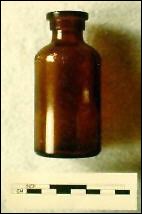
NPS
Different brand names were recovered from the Robinson House site. A Lysol bottle is pictured at left.
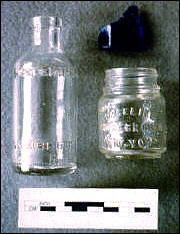
NPS
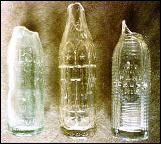
NPS
This photo shows different soda brands including Pepsi, Orange Crush, and Star Boy.
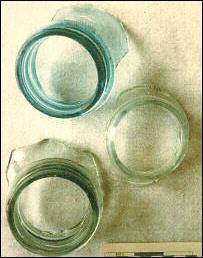
NPS
Besides using brand name goods, the Robinson family was also practicing home food preservation and storage. These jars were used for canning fruits and vegetables, such as tomatoes, beans, squash, pickles, grapes, and blackberries, that the family grew in their garden.
Last updated: April 20, 2020
